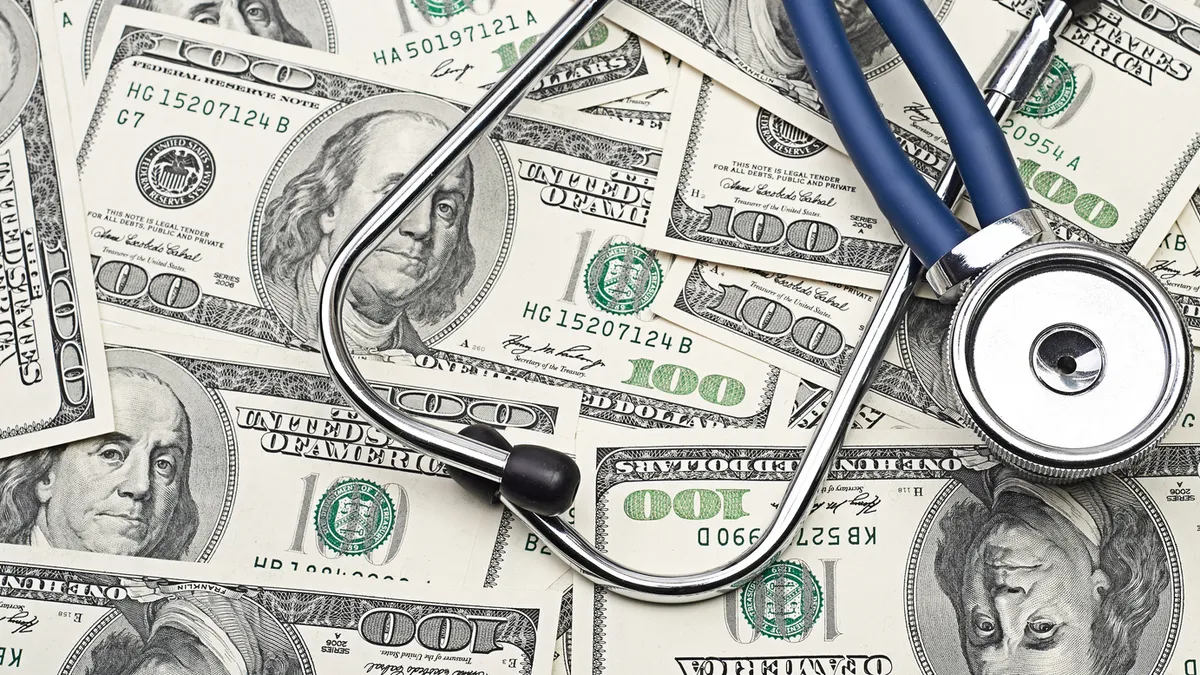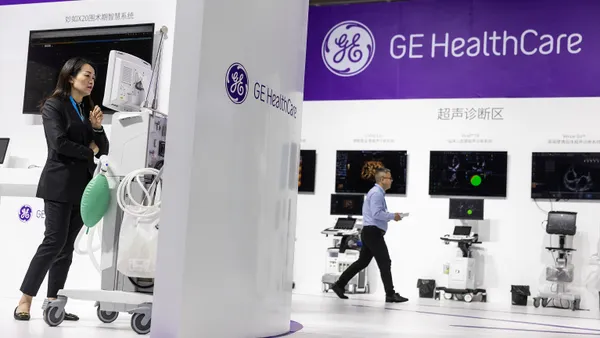Dive Brief:
-
National spending on healthcare is projected to grow 5.5% between 2018 and 2027, according to the CMS Office of the Actuary's annual report. This increase would outpace average projected GDP growth by 0.8%.
-
The forecast means the healthcare segment of the U.S. economy would climb to 19.4% by 2027, up from 17.9% just two years ago. The growth is expected to be driven by "fundamental economic and demographic factors," including changes in income growth and enrollment shifts from private insurance to Medicare as the population skews older.
-
The analysis includes a prediction that spending on durable medical equipment will reach $97.8 billion by 2027, compared to an expected $60.9 billion this year.
Dive Insight:
The projected growth in durable medical equipment spending comes as CMS continues to implement an overhaul of its coverage strategy for DME, moving to lead item bidding and boosting fee schedule rates in rural areas. A Government Accountability Office report released in July 2018 found that despite the changes, patients have still been able to get the DME they need, raising concern if the changes are neccessary.
More broadly, the nearing 6% growth in overall healthcare spending over the next decade stands in sharp contrast to the previous 10 years, which were marked by a recession and the birth of the Affordable Care Act, and saw health spend decrease from 5.5% in 2007 to 3.2% in 2017 (though out-of-pocket costs for the consumer rose 11% that year).
Healthcare spending is expected to increase to 4.8% in 2019 alone, up from 4.4% last year, and then increase between 2020 and 2027 by an average of 5.7%.
The analysis is based off current legislation and doesn't factor in any changes over the nine year period. Actual figures could skew heavily depending on any major regulatory or political shifts — for example, if the conservative effort to repeal the ACA gains traction.
CMS expects continuing growth in prices of healthcare goods and services to be a significant factor. Prices are projected to increase an average of 2.5% per year — almost half of the overall healthcare spending growth, in line with recent Health Care Cost Institute research finding prices, not use, drive higher costs.
Use and intensity of healthcare will account for just under a third of growth at 1.7%, with the remainder accounted for by changing demographics, CMS says.
Medicare spend is forecasted to grow an average of 7.4% yearly by 2027, outpacing Medicaid (5.5%) and private insurance (4.8%) as baby boomers age into the program. Insured Americans are expected to remain at roughly 90% throughout the decade, with a slight decline as 2030 looms.
"While Medicare spending is expected to accelerate the fastest among payers and contributed to the increase, growth in health prices and disposable personal income are also significant contributors," Andrea Sisko, an Office of the Actuary economist and author of the Health Affairs study, said.
Between 2020 and 2027, hospital spending is projected to grow yearly at an average of 5.7% and physician and clinical spending at an average of 5.4%.
The country's bill for prescription drugs will grow by 3.3% in 2018 alone, compared to 0.4% in 2017, partially spurred by the 59 new drugs on the market.
Prescription drug spending growth is forecast to accelerate further to 4.6% in 2019 and an average of 6.1% between 2020 and 2027 due to increased use by the aging population.
But that growth isn't obscene when looked at it in historical context, the report's authors say.
"What's been interesting about the last 10 years is that there's been a significant deceleration in drug price growth," National Health Statistics Group economist Sean Keehan said on a call with reporters, citing the emergence of more generic drugs as a factor. Between 2008 and 2017, prescription drug price growth averaged out at a relatively slim 2.7%.
Though the rate of drug cost is slated to increase, it's expected to remain lower than the longer term history, especially in the period from 1990-2007, Sisko said. CMS expects drug spend will account for almost 10% of America's healthcare spend by 2027, a small increase from its current level of 9.4%, and 1.9% of overall GDP.
The figures on drug spending don't tell the whole story. Much of the debate over rising drug prices relates to specialty drugs, including pricey biotech ones, administered in doctors' offices and hospitals.
But the Office of the Actuary drug cost estimates only include drugs purchased in a retail setting. Drugs bought in a hospital or physician office and billed there are lumped into the projected spending for the hospital or physician categories, respectively.












